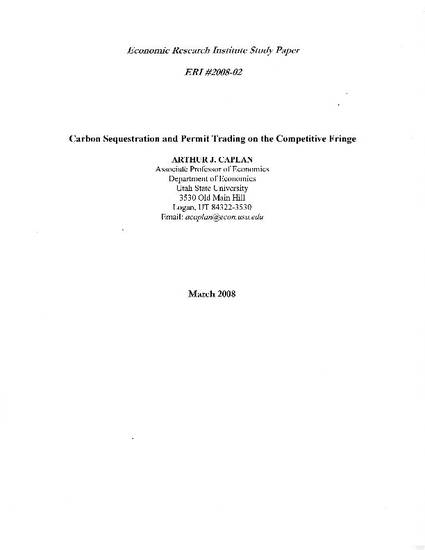
This paper makes two contributions to the carbon-sequestration literature. The first is the development of a theoretical framework within which sequestration and permit trading may be analyzed jointly in the context of a competitive fringe model. The second is a numerical analysis of the model. We find that when the cost-structure changes lead to progressively less separation in costs between the competitive fringe and the polluters (as well as between the polluters themselves), and the dominant firm becomes progressively more low-cost relative to the competitive fringe and the polluters, the equilibrium allocations of sequestration and abatement align with a higher carbon price. Aggregate output from the competitive fringe decreases smoothly and asymptotically toward zero. However, the (implied) number of fringe firms fluctuates up and down, eventually reaching zero itself. This type of result demonstrates the importance of incorporating into empirical supply-side models demand-side information that is reflective of an underlying market structure.
Available at: http://works.bepress.com/arthur_caplan/99/
